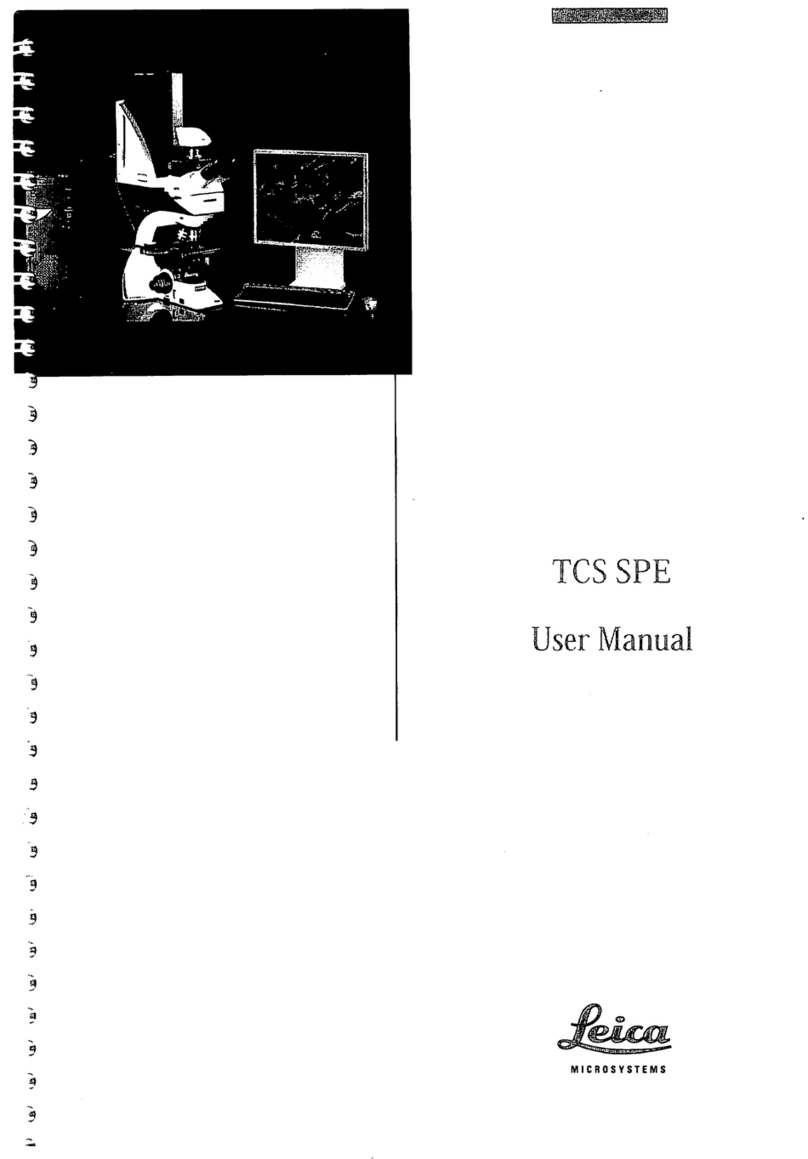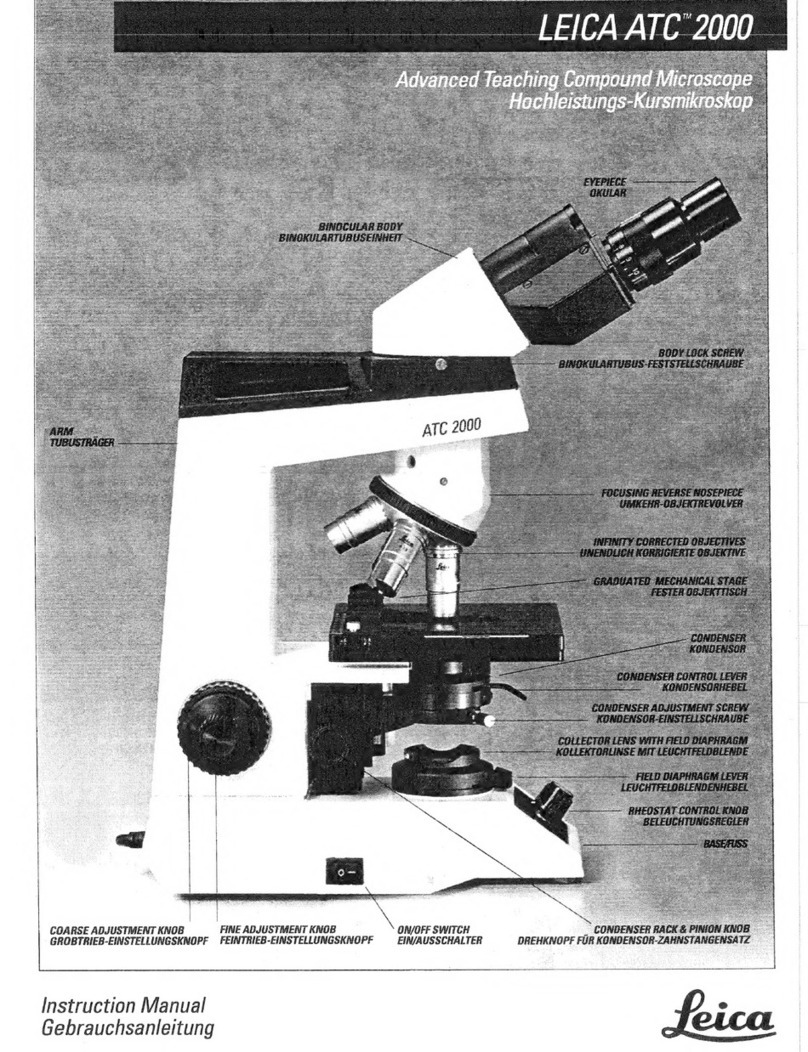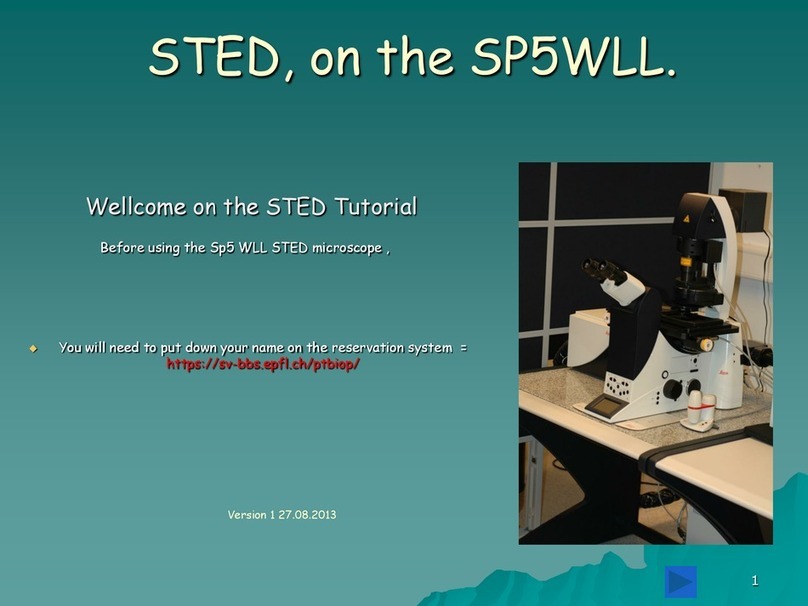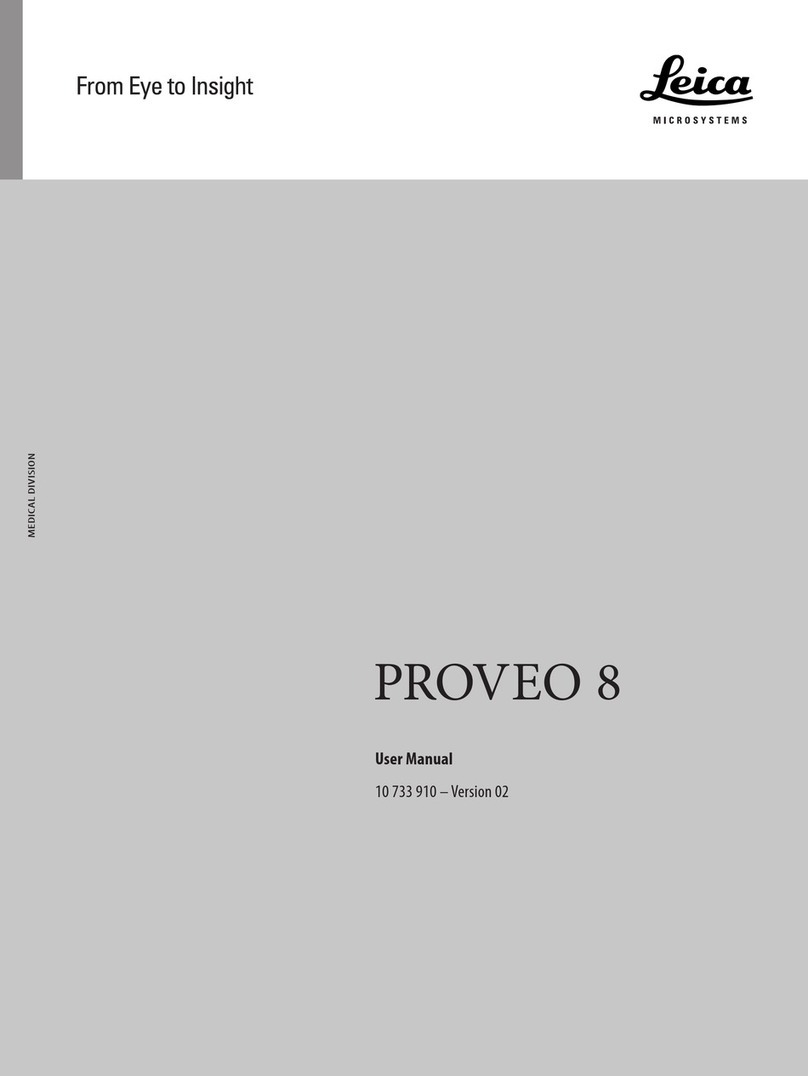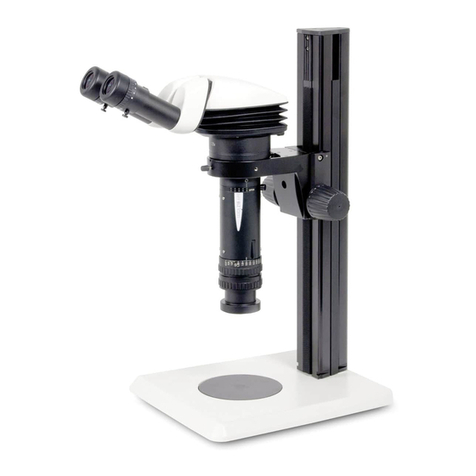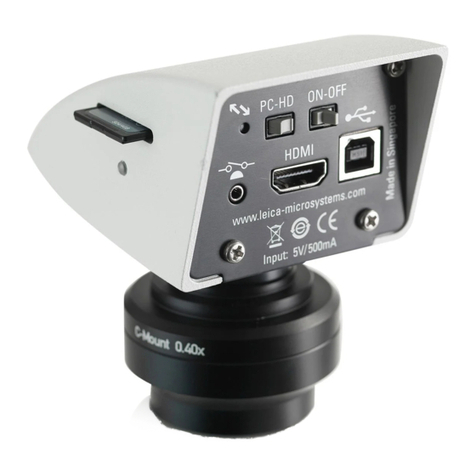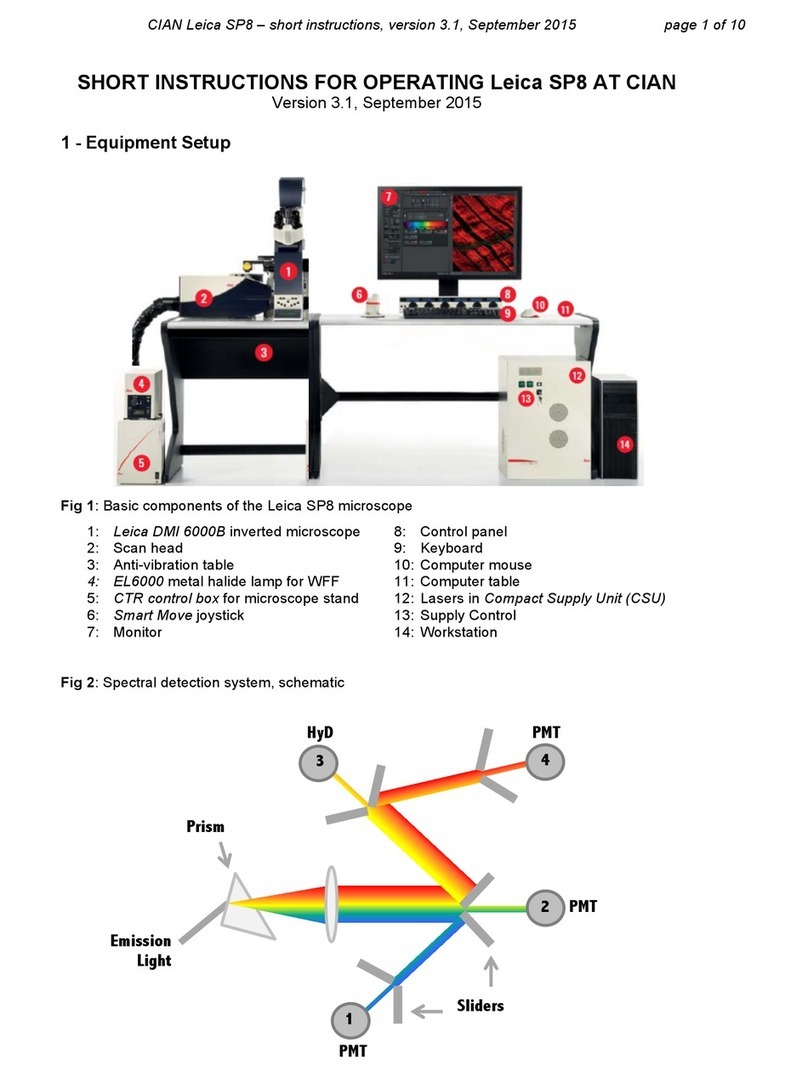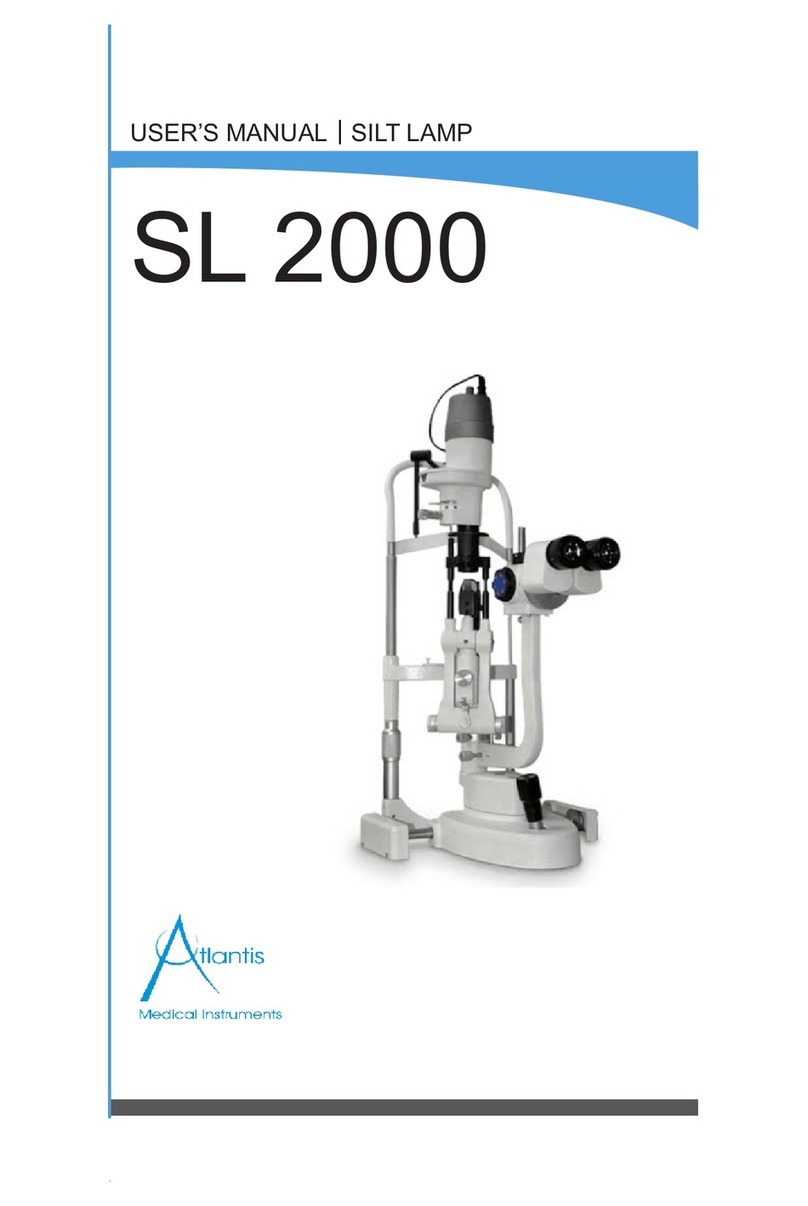6
Optical accessories
The requirements
Because the working distance, the total magnification and the
field of view must all e adapted to the application, the user needs
to e a le to choose from a range of high-quality o jectives and
eyepieces.
The Macrozoom- and Apozoom o jectives can
e com ined with the coaxial incident-light
housing, with a quarter-wave plate, and with
additional o jectives.
1 5 Macrozoom objective
The Macrozoom o jective is inscri ed with the
magnification range 6.3×to 32×. This means
that, if 10×eyepieces are used in the inocular
tu e (which introduces a tu e factor of 1.25×),
o jects can e o served at constant sharpness
over a zoom range from 7.9×to 40×. The optical
components are computed to give wide aperture
and good resolution, multiple-coated to ensure
high image contrast, and well corrected to
produce image fidelity and crispness.
The 0.5×and 2.0×additional o jectives can e
used with the Macrozoom o jective.
1:5 Macrozoom and 1:6 Apozoom
o jectives
1 6 Apozoom objective
The intrinsic zoom range of the Apozoom o jec-
tive is from 5.8×to 35×, i.e. the zoom range down
the inocular tu e if 10×eyepieces are used is
7.3×to 43.8×.
Because of its excellent chromatic correction for
three spectral colours and for all intermediate
tones, the Apozoom is the o jective of choice if
requirements stipulate maximum sharpness,
highest resolution and maximum contrast rendi-
tion, even for the finest structures.
The 0.4×and 2.0×additional o jectives used
with the Apozoom o jective have een specially
designed for it.
Wide-field eyepieces for spectacle wearers,
distortion-free
• Intrinsic magnifications
10×, 16×, 25×and 40×
• Usa le with or without spectacles
• Adjusta le eyecups
• Diopter setting adjusta le from +5 to –5
• Accepting graticules for measuring
and for photography
The asic outfits include distortion-free, wide-
field eyepieces (10×/21B) for spectacle wearers,
with excellent imaging characteristics. Because
of their long exit pupil distance of 22mm (at this
distance the o server sees the full field of view)
these eyepieces are usa le either with or with-
out spectacles. If you work without spectacles
and want closer contact to the eyepieces or to
the eyecups, you can displace the height of the
eyecup a ove the eyelens within the range from
4mm to 20mm.
Additional o jectives, with ayonet
mount: 0.5×and 2.0×for the Macro-
zoom, 0.4×and 2.0×for the Apozoom,
and rotata le quarter-wave plate.
Wide-field eyepieces for
spectacle wearers, 10×/21, 16×/14,
25×/9.5, 40×/6


